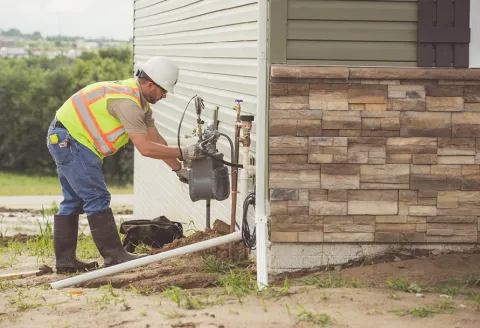Choose Natural Gas
Natural gas is helping fuel the future. It’s an efficient and reliable energy source for home and business use. It’s cost-effective and equitable. And it plays a vital role in reducing our country’s greenhouse gas emissions. Government policies are being introduced which restrict the direct use of natural gas in Americans’ homes and businesses.
At Black Hills Energy, we believe a balanced mix of wind, solar, energy storage, and natural gas is essential to a reliable, resilient and cleaner energy future. Restricting options is not the answer. Help preserve your right to choose the energy source that’s right for you.
Let your voice be heard
Tell your local government you want to choose the energy that's right for you.
Contact your Elected Officials



Frequently asked questions
Can natural gas reduce emissions?
Yes. Natural gas is a cleaner source of energy, which has and will continue to reduce our country’s carbon emissions. In fact, the use of natural gas has decreased global power generation carbon emissions by more than 50% over the use of coal-generated electricity. Through the use of new technology, renewable natural gas and increased energy efficiency, natural gas can continue to shrink our country’s carbon footprint.
Can natural gas improve our environment?
Yes. Natural gas efficiency and the growth of renewable energy have led to energy-related carbon dioxide emissions hitting 30-year lows. Emissions from the natural gas distribution system have declined 70% since 1990.
Source: AGA 2024 Playbook
Is natural gas more cost-effective than electricity?
Yes. Natural gas is 3.3 times more affordable than electricity. A recent study, for example, found that homeowners in Colorado paid 3.35 times higher prices for electricity than for natural gas in 2022 on an energy-equivalent basis.
Households that use natural gas for home heating, cooking and clothes drying save an average of $1,132 per year compared to homes using electricity for those applications.
Source: AGA 2024 Playbook
If electrification isn’t the answer, what is?
There’s no silver bullet or single answer to our country’s energy future. Our most successful approach will be to work together and to keep all options for emission reductions on the table. Natural gas supplies the energy we need now and will be an essential piece of our cleaner energy future. As renewables and technology continue to develop, our pipeline infrastructure will be a valuable asset for storing and transporting renewable energy.
Is natural gas good for the economy?
Yes. Natural gas is an economic driver. More than 22,000 businesses sign up to use natural gas each year. Employment at natural gas utilities has grown 20% in 10 years.
Source: AGA 2024 Playbook
Is natural gas reliable?
Yes. With its network of underground infrastructure and abundant supply, natural gas consistently provides the critical energy we need, rain or shine, and is more protected from natural disasters than other energy sources. With 3,353 trillion cubic feet of natural gas and 2.6 million miles of pipelines, natural gas is available where you need it, when you need it.
Source: AGA 2024 Playbook
Does natural gas create electricity?
Yes. Natural gas creates electricity when Americans need it most including the customers we serve with electricity. In fact, natural gas is the source of more than 35% of electricity generation in the U.S. Natural gas provides the reliability needed to fuel our country during peak demand or when renewable sources can’t operate.
Source: AGA 2024 Playbook
Can natural gas be renewable?
Yes. The use of renewable natural gas (RNG) is key to our cleaner energy future. Renewable natural gas is a low carbon natural gas alternative. RNG can come from many different sources including wastewater treatment facilities, landfills, animal manure, food waste, ag and forestry residue and more.
RNG can be cleaned to pipeline quality and transported directly to homes and businesses using our existing natural gas infrastructure. Learn more about RNG.
Natural gas is a critical source of energy that will continue to play a vital role in our energy transition. One of the most cost-effective and equitable methods to reduce building sector emissions today is to pair low carbon fuels with high-efficiency appliances.
A recent report by GTI Energy found that a two-energy delivery system — natural gas and electricity — can provide an optimized approach for residents for energy delivery and reliability, each with corresponding GHG reduction impacts.
In the end, we will continue to take a thoughtful, collaborative approach to emissions reductions across our state and our natural gas system. We will keep our customers’ best interests at the forefront of our decision making and we will remain open-minded to innovative solutions that benefit our communities and the environment.